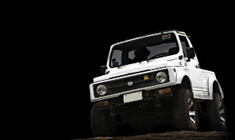News
Installing new trailing arms & rubber buffers on my Alfa Romeo Spider
We eventually found out that we also had to loosen the prop shaft to remove the second part of the rubber buffer.
BHPian Jeroen recently shared this with other enthusiasts.
Earlier this week I picked up two exhaust dampers for Peter's Jaguar XJ6. They are tough to source. You can still get them made from stainless steel. But apart from the price, which is quite ridiculous, they also give a very different sound.
Peter eventually found two second-hand ones at a place very near to us. So I drove over to pick them up. This was quite the workshop!! It's owned and run by a guy, probably about my age, with his two sons. They deal only in Jaguars and Jaguar parts. It had a lot of stuff for my Jaguar too.
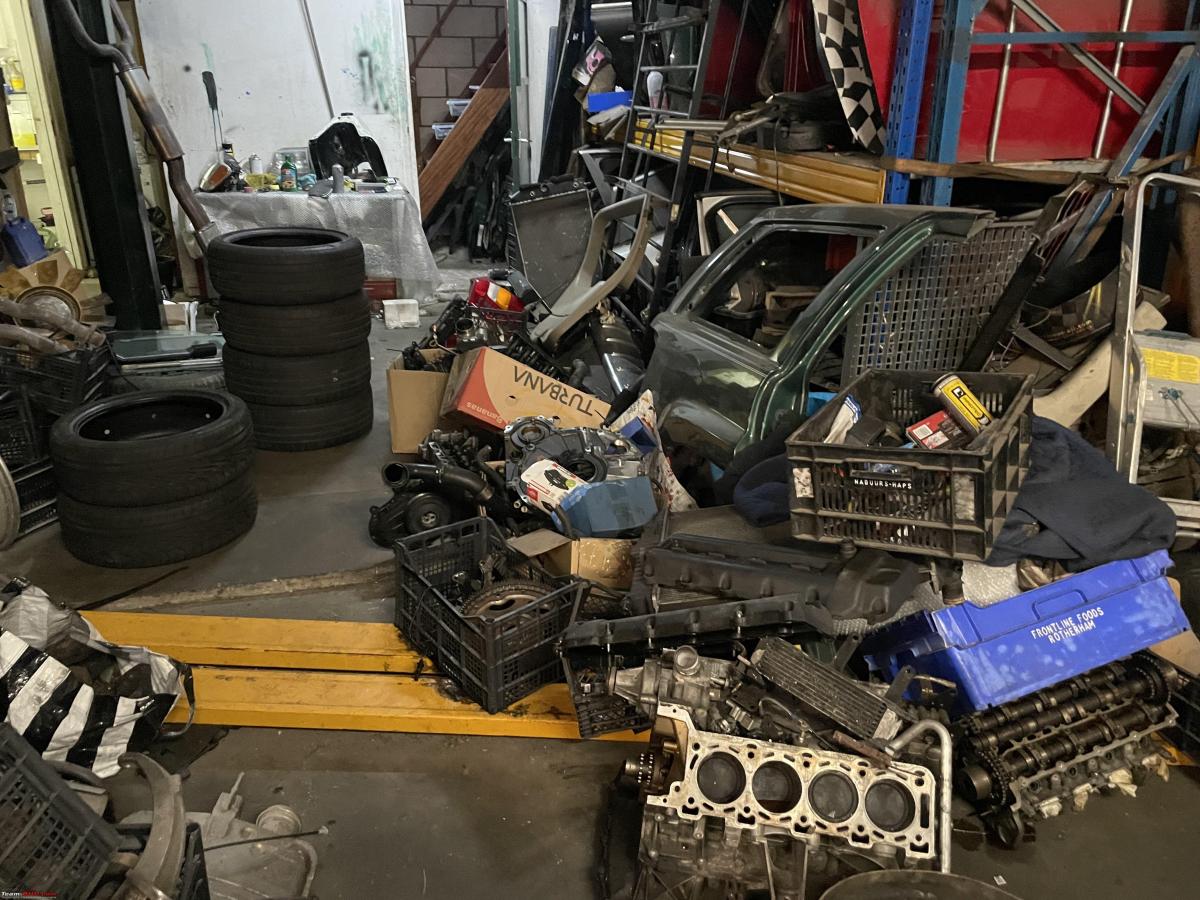
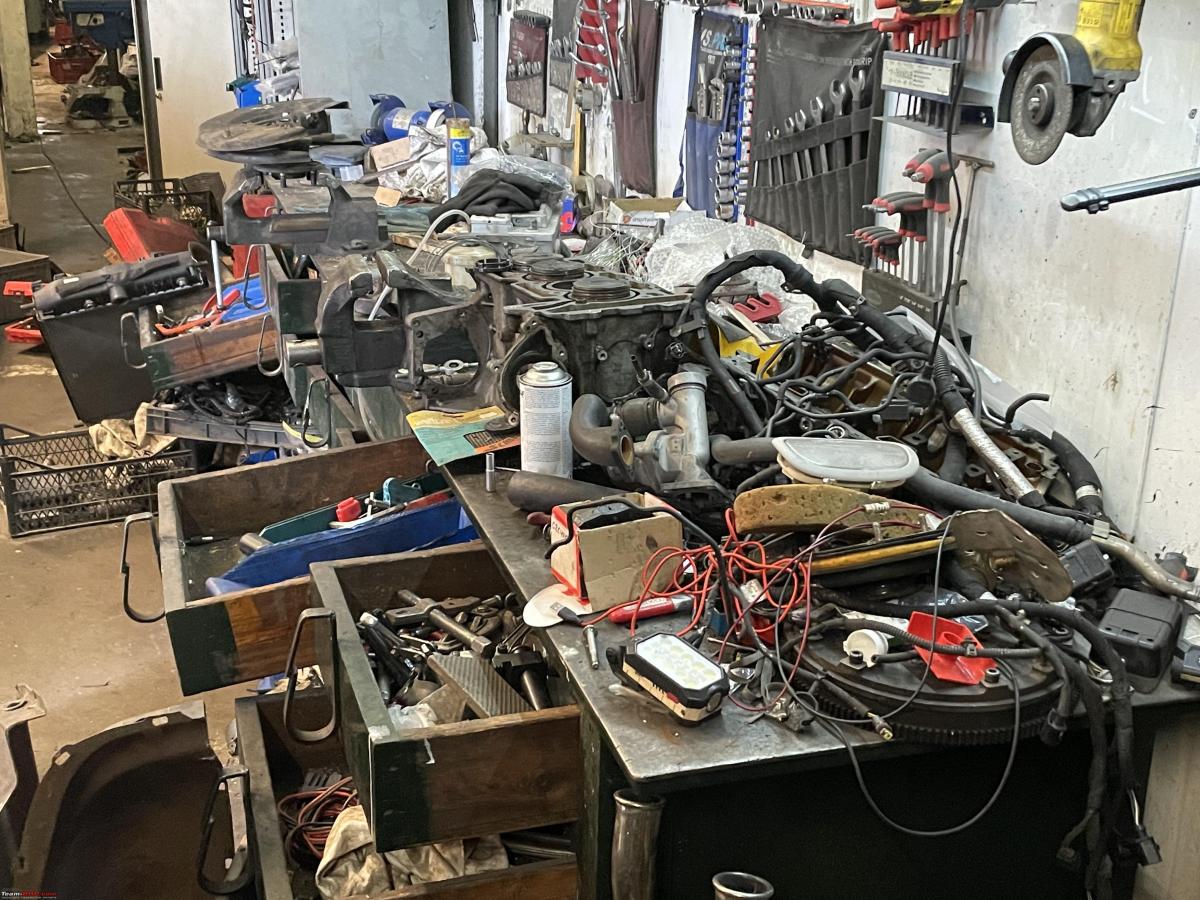

All ready for Peter, including the tools he left last time so I could finish up the Jeep and his change.

A small, but very important, repair job popped up. Our grandson's favourite talking/singing book stopped singing!! Opa to the rescue. The batteries needed replacing, but then it still would not sing! So I took the little electronic music box apart, checked and cleaned it, popped it back in and now it works fine again!
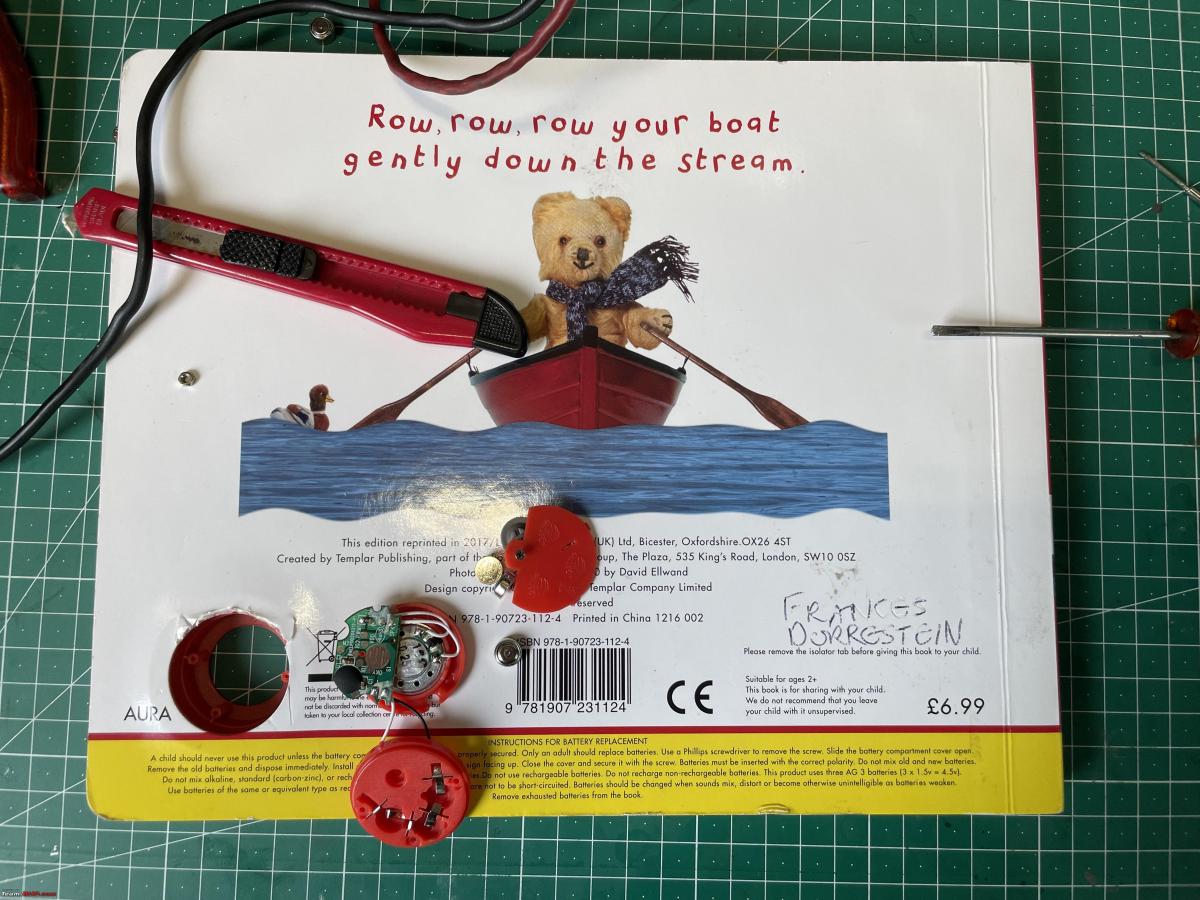
Spanner mate Peter came around yesterday to help me change out the trailing arm and Diabolo rubber on the Spider.
Let's have a look at the rear suspension of this Spider. Pretty rudimentary. A fixed axle/differential. Two trailing arms and a reaction triangle. The reaction triangle is fixed to the chassis on the far sides and the middle holds on the differential using these buffer rubbers. Because these rubbers look like a Diabolo they are commonly referred to as Diabolo rubbers.


Peter and I replaced the trailing arms and the Diabolos on both our Spiders about 25 years ago. Took us the whole afternoon. So we thought we should be able to do better now. Ideally, you need to have the Spider on a lift. Makes a big difference, but I don't have one, so we make do with some improvisations.
Moved the Jaguar out of the way and positioned the Spider so we could easily work and walk around it.

First thing. With two jacks we raise the rear of the Spider quite high and put the chassis on axle stands.
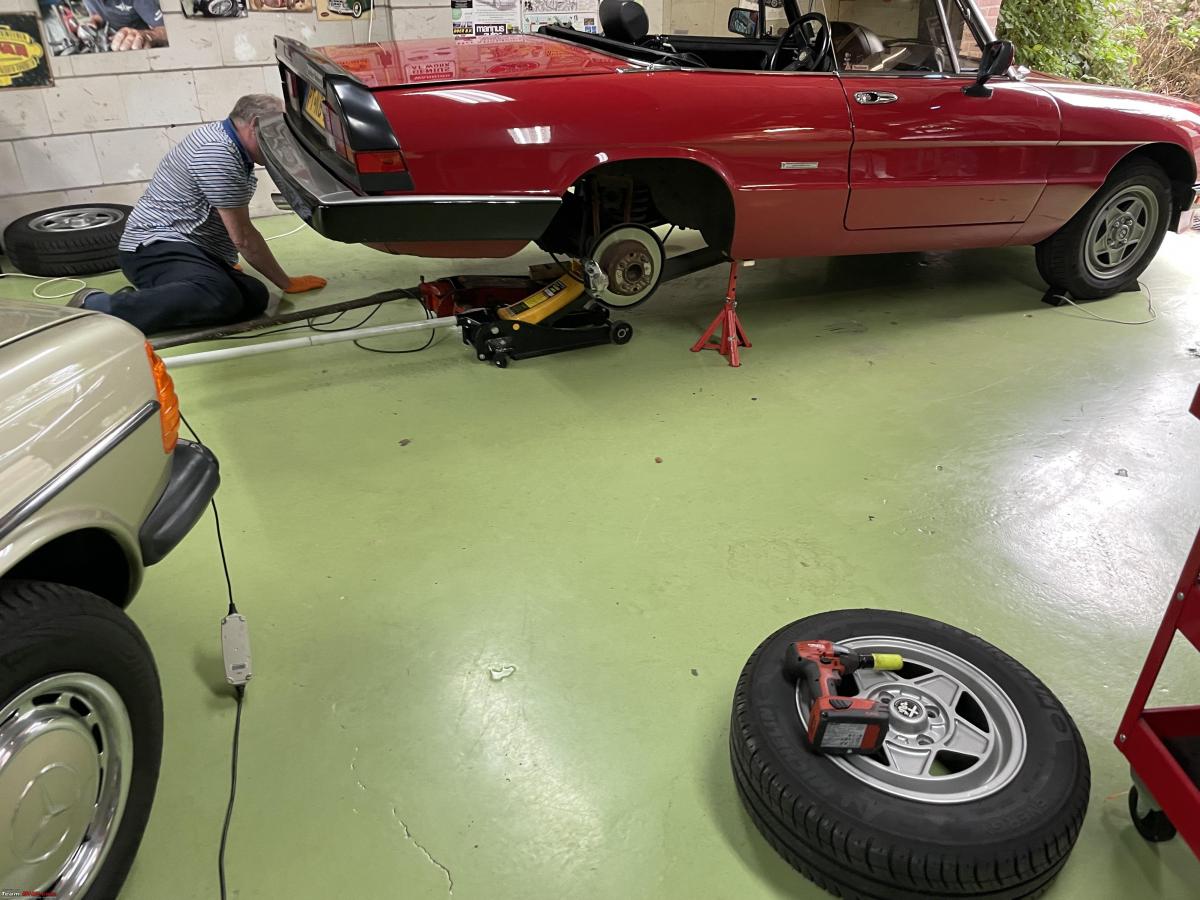
First, we undid the large nut holding the Diabolo in place.

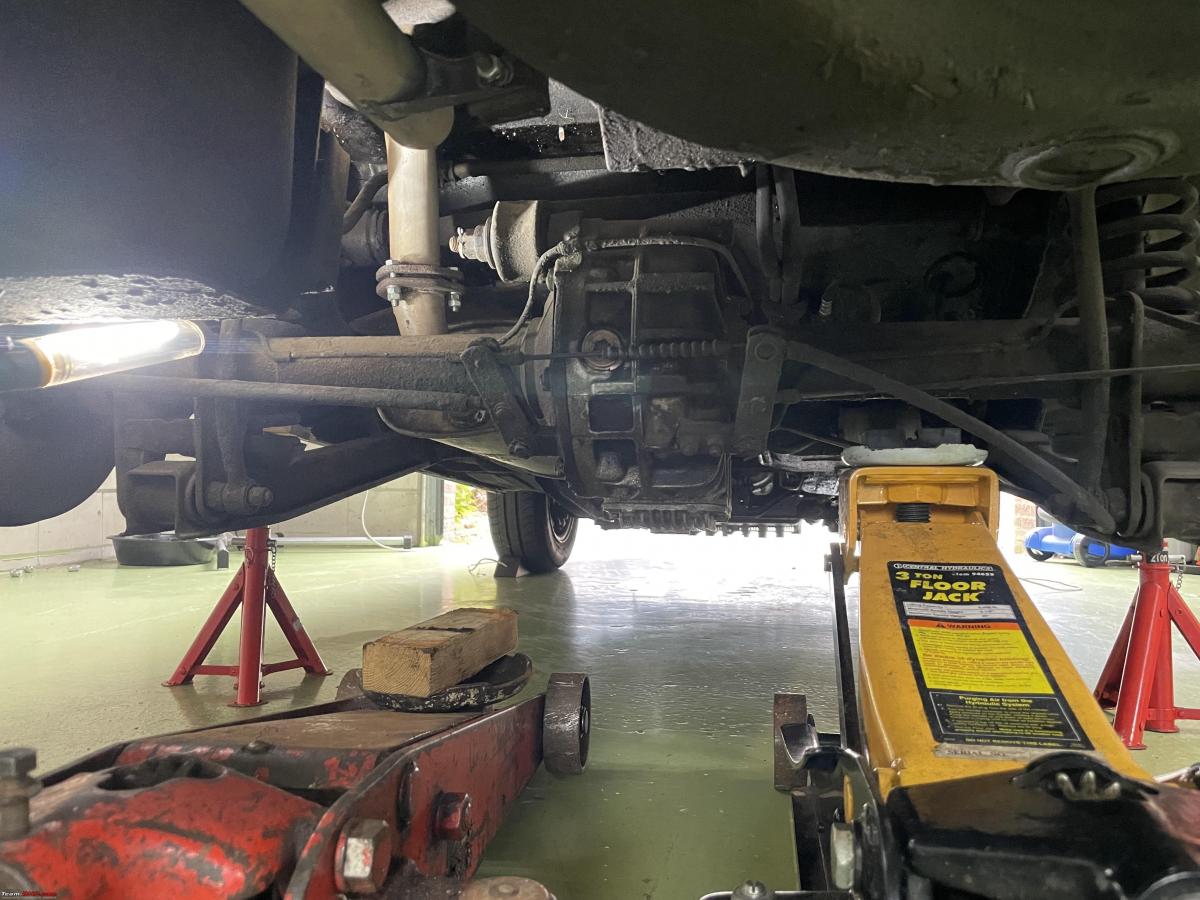
Peter fighting with the cotter pin!

Next, we undid the bolt retaining the shock absorber to the trailing arm.
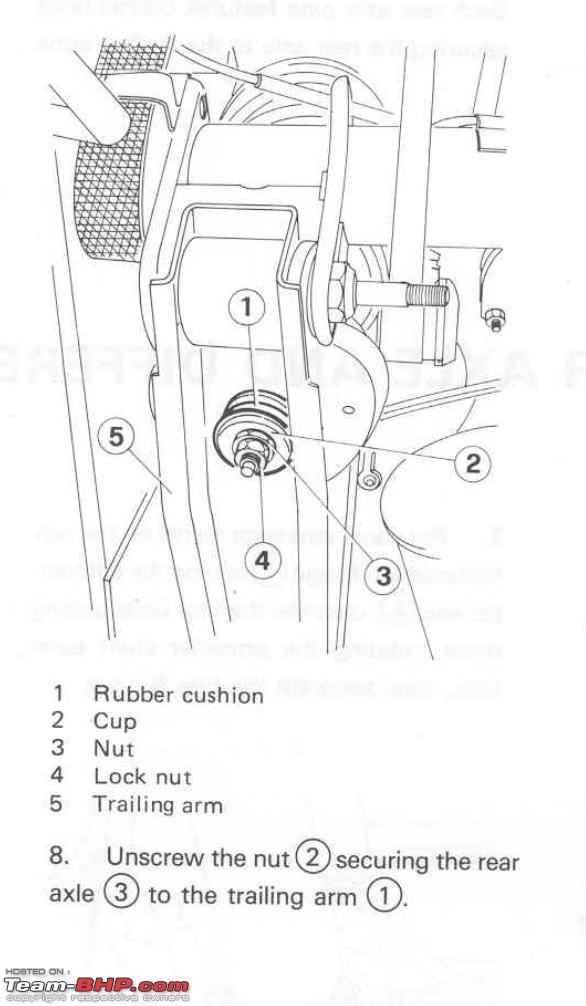
Next, we place a jack underneath the trailing arm (Because it is still compressing the spring!) and undo the large bolt holding it and the stabiliser bar in place.
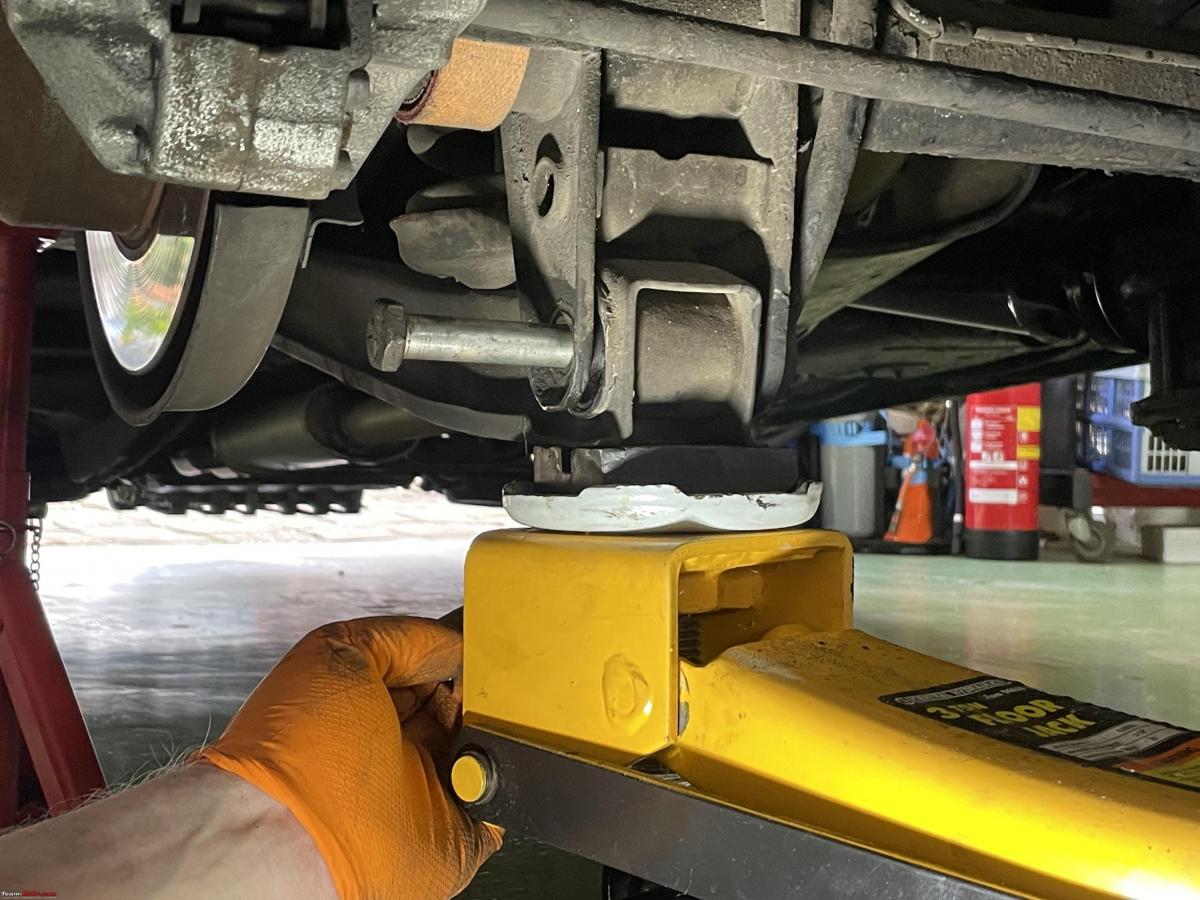
Next lower the jack carefully, so the spring unloads and then remove the forward bolt holding the trailing arm to the chassis.
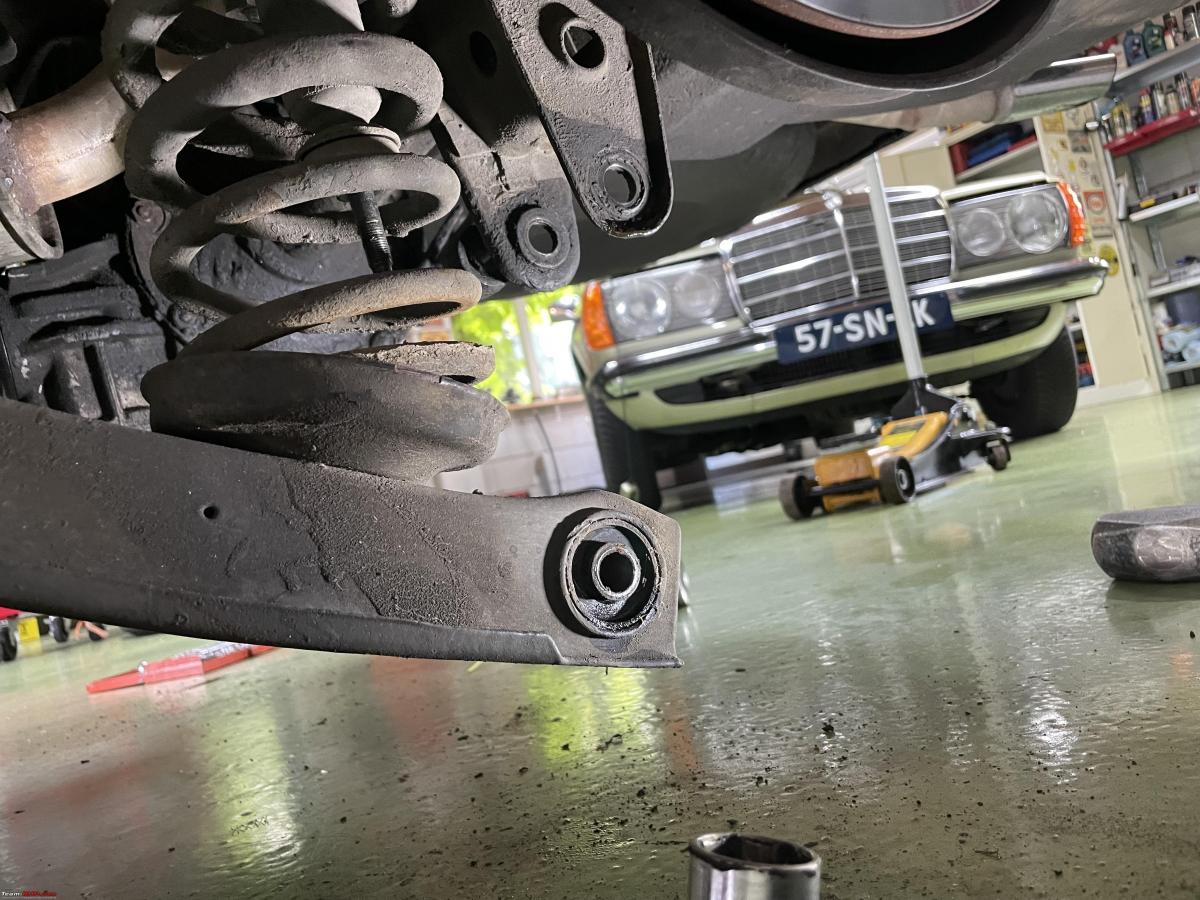
All went pretty smoothly.
With the trailing arm removed, the rear axle and differential hang in the rebound strap. We thought we could just push the whole axle to the right to get the second part of the Diabolo out. We put a jack under the differential for easy manoeuvring, but eventually found we also had to loosen the prop shaft. Always make sure to mark the flanges, because they need to go back together in an identical orientation!!

With the prop shaft disconnected we could easily manipulate the whole rear axle and push it so far to the right we could extract the other Diabolo half.
Here you see that huge bolt on which the diabolos sit held in place the reaction triangle, you see just above.

Peter doing some technical!! At our age, this sort of work is not impossible, but we are not as agile as we used to be. So it does take a bit longer!!

Putting the new trailing arms and the diabolo in is simply a matter of doing all of the above but in reverse order. The trickiest thing is to push the trailing arm back against the spring. We used a few different techniques. You also need to ensure that the spring sits correctly both on the top and bottom parts. It will only fit correctly in one specific orientation.
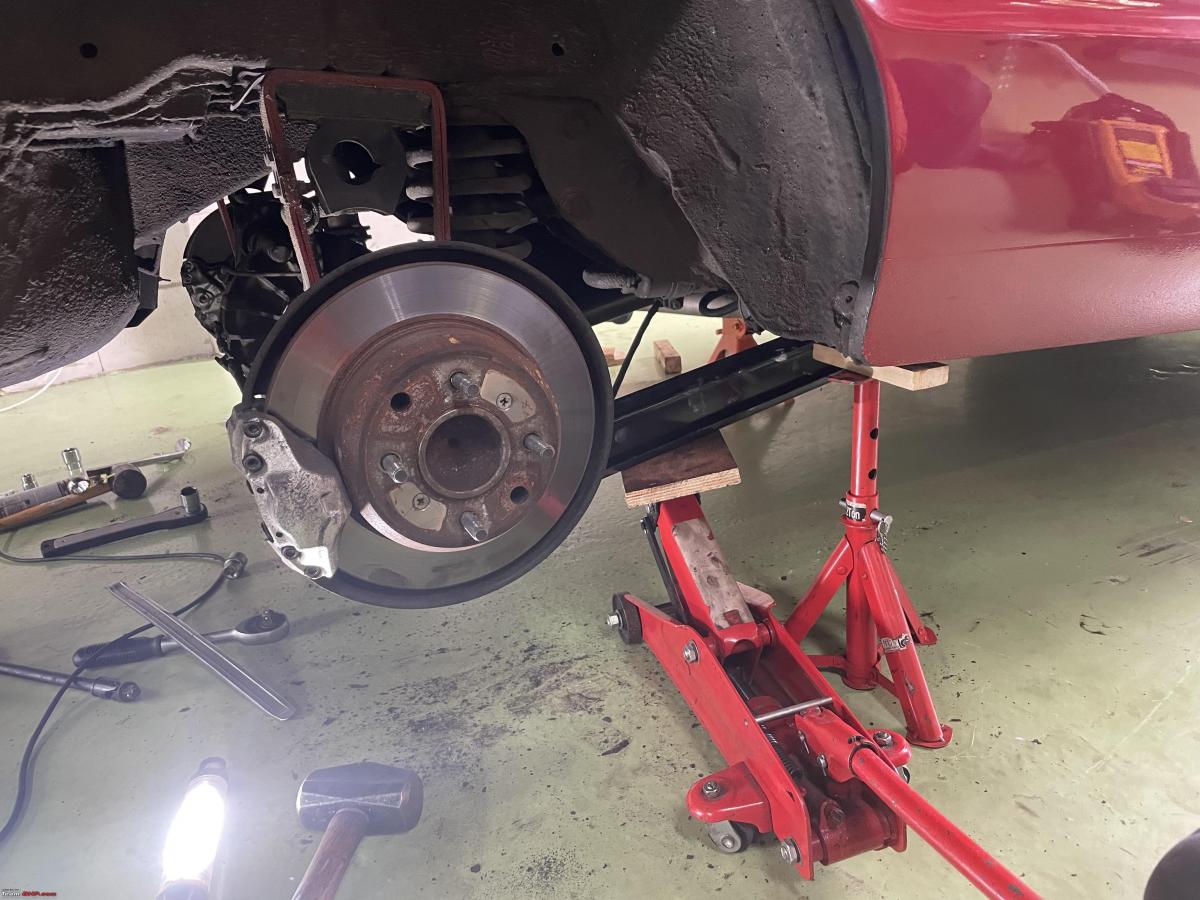
With everything bolted back on we took the Spider for a quick test drive. Handles a bit tighter and less pulling to the right under heavy braking.
It took us about five hours, start to finish, including two coffee and a lunch break. So we consider that pretty good going for two old gits!
As I showed in an earlier post, the parcel shelf was still removed. We listened very carefully, but no whistling from the new vacuum sensor, so that problem is solved as well!
Peter and I spent some more time going through the various tools and parts we will be taking with us.
I received this set of decals for my Jeep. These are all the original decals as could be found on a factory-new Jeep. Mine still has a few, in various states of readability. I came across a guy who sells these on Facebook. Ordered them and they look pretty cool!! I will install them in the coming week.
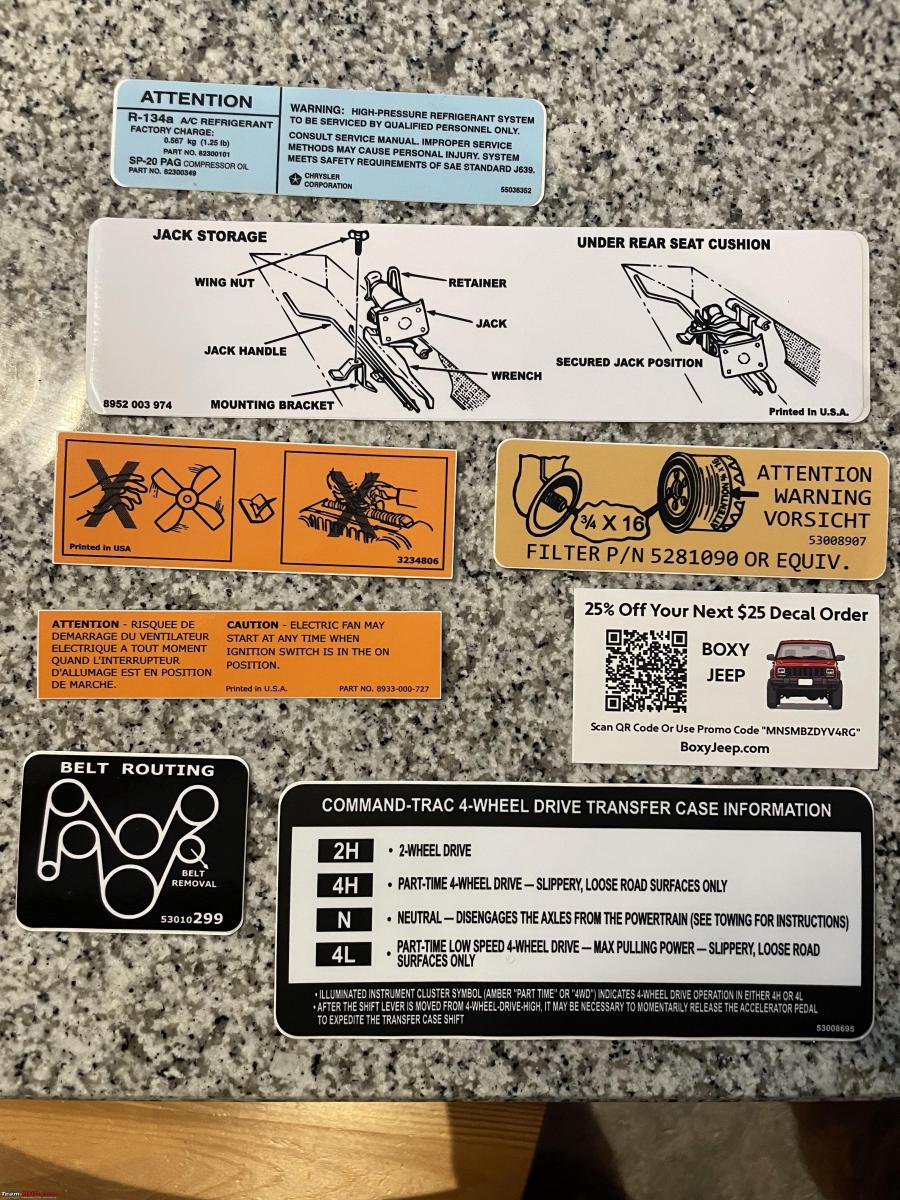
I also picked up this heat gun. I did not have one. This one cost Euro 12 only! Which here in the Netherlands is unbelievably cheap.

This coming week I will start cleaning and preparing the Spider for our Scotland trip!
Check out BHPian comments for more insights and information.
- Tags:
- Indian
- Alfa Romeo
- mechanicals
News
Timing belts immersed in oil: Are they as reliable as carmakers claim?
The most common issue is the belt gradually wearing off in the oil and the belt dust settling in the sump and then blocking oil pump intake.
BHPian Sankar recently shared this with other enthusiasts.
This is not new and seems to have started with the Ford 1.8TDCI engine as a timing belt, but the Peugeot predates the ford in using a wet belt but to drive the fuel pump. Ford and PSA have collaborated to create a bunch of shared engines in the past so the connection is quite natural. It seems the Honda and a few others have also joined this wet belt bandwagon. For the owners of the Ford 1.8TDCI there is a chain conversion kit available for the wet belt.
What I gathered is that this timing belt in oil is not in the interest of the end consumer, these are for the benefit of the manufacturer who has to meet certain emission and fuel efficiency norms on the whole across their product portfolio. So they look for avenues to extract the tiniest of efficiency gains from wherever they can and reliability be damned. The belt in oil has 30% less frictional losses than a timing chain system for a net 1% fuel efficiency gain.
But they don't seem to be very reliable going by the information available on the internet. The most common issue is the belt gradually wearing off in the oil and the belt dust settling in the sump and then blocking oil pump intake. There's a new belt of another chemistry which is supposedly better. But ironically the manufacturer recommends reduced replacement intervals with this new belt.
Ford's Ecoboost 1.0 and the new Puretech 1.2 by PSA are two engines with wet belt systems sold in India per my knowledge.
Here's what BHPian Vishy76 had to say on the matter:
Thanks for this thread. I believe a timing belt system itself is a step back from timing chains. Timing belts have the following drawbacks over chains in my opinion:
- Have to be replaced periodically. Chains on the other hand last the life of the engine in most cases (especially petrols)
- Belts have a tendency to get brittle with age and develop cracks. I have seen this for myself on a couple of low mileage TDIs. Chains on the other hand don't face this sort of an issue
- Belts typically just snap without warning. Chains on the other hand give audible warning in most cases if they are going to go bad
Here's what chains can't do as well as belts:
- Timing chains are typically a bit noisier than belts. Though I haven't noticed a stark difference on petrols between the two, timing chain driven diesels do sound louder to me
- Chains are expensive if and when the time comes to replace them. Replacement is also slightly trickier
- Chains are lubricated by oil. While this does guarantee excellent life, timing chain covers are a potential weak spot for oil leaks. Additionally, you do need to adhere to oil change intervals and use good quality oil to ensure good timing chain life
Coming to belts immersed in oil, I think it's a rubbish piece of technology. I am a part of a Ford Transit owners group on FB and I see numerous owners complaining that pieces of the timing belt were found in the oil sump strainer!
The integrity of the belt is compromised, but more importantly, the engine head could potentially be starved of oil and seize if bits and pieces of the belt choke the sump strainer enough. These belts are also expensive as compared to traditional timing belts. I don't see the point of having these if they need replacement as well in the first place and are only going to last slightly longer than the traditional stuff. To me, a timing belt immersed in oil is the worst of both worlds.
If you thought timing belts were perfect examples of engineering obsolescence, the auto industry just one upped you . As always, I think it was better to stick to the good old timing chains than come up with these rubber contraptions.
Here's what BHPian UD17 had to say on the matter:
Advantage of chains: Durable, Less width (saves some packaging space in Z direction)
Disadvantages of chains: Costly (& costly sub components like chain guide/tensioners), High weight, Needs lubrication, noisy, Sensitive to temperature (cold/Hot engine), Now biggest one is the tendency to not allow any stretch (Chain system works in relatively high tension which takes more energy from the engine - parasitic losses), Need for higher cleanliness specification
Advantage of Belt: Weight less, Stretchable (Can handle some tricky situation without snapping), Can work in low tension (as compared to chain), Low cost, no sealing required, low cost (of belt & subcomponents like tensioners)
Disadvantages of Belt: Durability (as compared to chains, But modern HBR belts are durable till 300K Kms), sensitive to side tracking (edge wear possibility), Low replacement intervals (some OEMs have even as low as 100,000 kms)
Belt in oil: is now a mix approach of the above two, where the advantage of belt are achieved with the sealing lubrication (that's why called belt in oil). Here we get advantage of chains and belt both but looses on the major risk of the contamination & loss of tensioner damping in oil environment.
Traditionally European customers prefer more of a timing belt, while Japanese OEMs prefers Chains. American have mixed approach to this. But as far as i can see in the business world, the timing belts application are getting reduced.
Here's what BHPian carthick1000 had to say on the matter:
In the past when I had ICE cars, I used to do maintenance myself and topics like this get my attention straightaway. But moving to electric mobility few years ago and never have to deal with understanding hundreds of components and tens of replacement every service interval, I am feeling that I save a lot of time now-a-days.
This is a quick note (of nostalgia) to myself and some others on this forum if they are still sitting on the brim of switching to EVs.
Read BHPian comments for more insights and information.
News
Joints: Different types & their contribution to the automotive industry
What I want to show is how a simple joint changes everything and what do quality obsessed companies do to a simple hardware to make it timeless.
BHPian aquavivarium recently shared this with other enthusiasts.
I have been reading this portal since 4 years and joined recently. I guess the core thought behind this group is the sharing of original, unbiased and unique ideas. Each of us is special and thinks differently.
We all had experiences and our own learning curves. Being in different parts of the globe, having different backgrounds and social positions adds new dimensions to the conversations. Irrespective of such a vibrant mix we all have one thing in common – love and commitment for our set of wheels, be it cars, bikes etc.
Since humans invented assisted means of mobility the world has changed faster than men could fathom, wheel is the numero uno invention. From experimental to novelty and then mass production. A metal or wooden box with initially 3 then 4 wheels, propulsion and control surpassed every other type of transport. It was for a simple reason STABILITY, this design did not require balancing, was easy to maneuver, could be modified easily to suit utility and gave a comfortable ride.
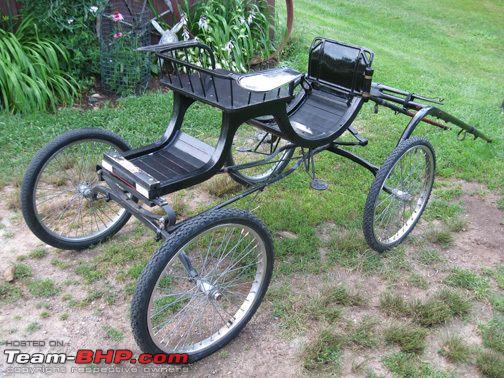
No wonder this design was chosen to be pulled by domesticated animals, we had two wheel designs but the instability is obvious:
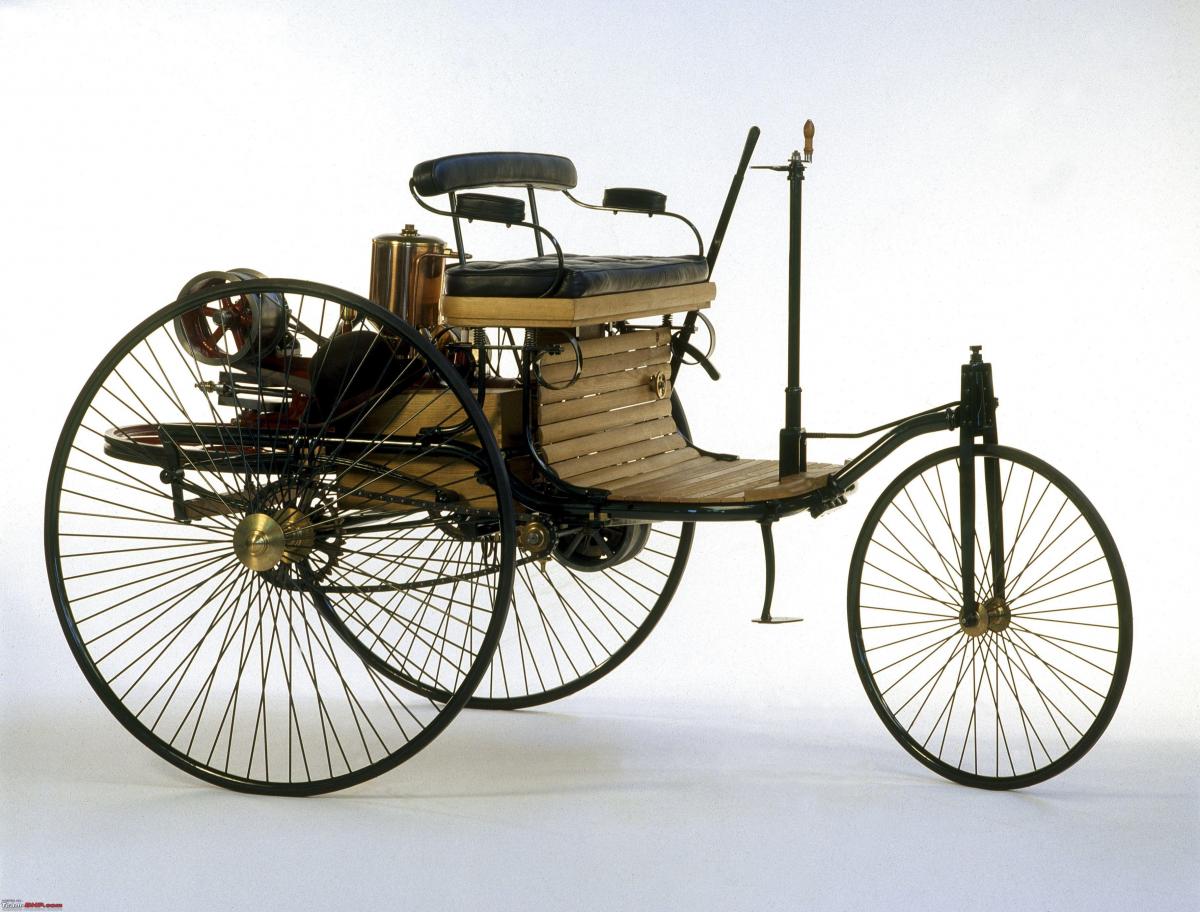
Patent for the first “Benz” car was registered in 1886, as a few bold people thought to replace horses with Horsepower. Still these were restricted to experimental models OR for a very few elite.
“Necessity is the mother of invention” proved true as First world war lead to development of Piston engines on a large scale. Carbon based fuel powered engines entered main stream, massive industries were set up , piston engine proved its might and became the backbone for providing power and transport . Although the driving force was war a few began to imagine and develop the idea of a personal means of transport using similar engines for the masses.
At the end of First world war ,we saw the emergence of “ Car “ , it was a fun machine for the few lucky , was mostly handmade and assembled with focus on just one thing –Quality. Customers now were the bourgeoisie, the rising class and then we had the second war. With the piston engine well established now was the turn of the Jet propulsion. Post 2nd war , car was already a common sight and manufacturers already aimed for mass production. Now Quality was in focus but not top priority, still a few remained committed and to this day give us products which “ feel “ different and “age” differently.
Remove all branding from a 10-15 year old Lexus OR Maybach and compare with a average family car of same type & age , what is it that keeps a good quality machine going on and on, answer lies deep inside in a simple Bolt and Nut “ joint ”. And this is precisely my topic and I intent to explain “Quality” by the most elementary and innate feature of any machine . Starting from the simplest cycle to the Large Hadron Collider, everything we make and assemble has a “Joint “.
Difference between a Rolls and a Maruti is very obvious. In fact, it is stupid to compare, yet both serve the same purpose. Let us assume we take all the major parts of a Rolls eg – chassis, engine, upholstery and everything we see in a Rolls, and assemble it in a Maruti plant, will we get a Rolls?
Please note I don’t intend to downgrade Maruti, I have bought their cars and always appreciate their suitability to Indian ecosystem . What I want to show is how a simple joint changes everything and what do quality obsessed companies do to a simple hardware to make it timeless. I have mostly made the pics myself, they are not technically accurate and still convey the underlying message .
Now lets start by example:
Our joint will consist of two metal pieces joint by a bolt and nut. We shall continue to improve the same and give reasons alongside:
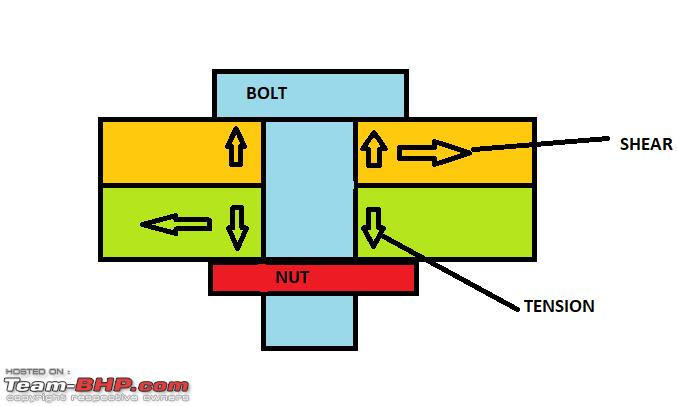
Basic: As shown, we have joint two metal pieces by a bolt and nut, they can take all the tension and shear loads, torque is fully tightened by hand tool, this is a fairly sturdy joint. We see this happening at most repair shops.

Calibrated Torque (use of torque wrench): Anyone with basic mechanical knowledge knows the importance of correct torque, it depends on the bolt/nut size, thread type, material etc. It is a measure of how hard the threads of the two will engage with each other OR amount of friction lock. Less torque will loosen and more will create undue stress on the joint and might lead to a material failure. Torque values for nut and bolt are different and must be kept in mind. In high temp. areas to prevent jamming of the nut a "neverseez“ compound is also used on the bolt threads.
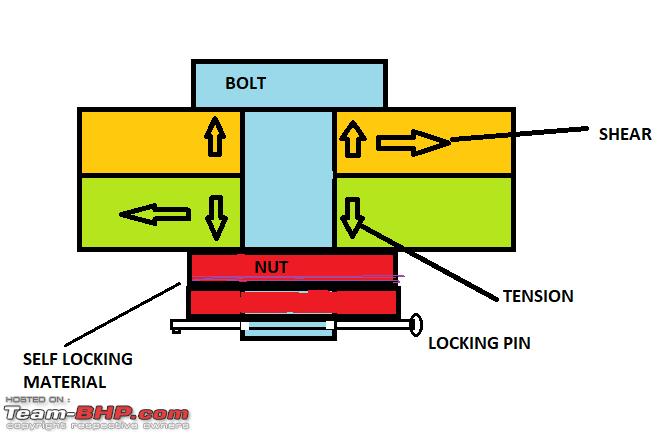
Locking NUT: All joints are subject to vibration and/or thermal cycles, over a period of time the nut is bound to get loose and results can be catastrophic, and various ways are used to lock. As shown, we can use two nuts, lock nut or a cotter pin in the hollow shank of the bolt which prevents the nut from unscrewing itself. Bolt head also can have a provision for wire locking. Lock wiring is a skill, which takes time and will to learn.
I have experienced bloody fingers and much resentment myself, but to complete a complex lock wiring job gives a satisfaction like art work. In aviation, wire locking bolt is a very widespread.
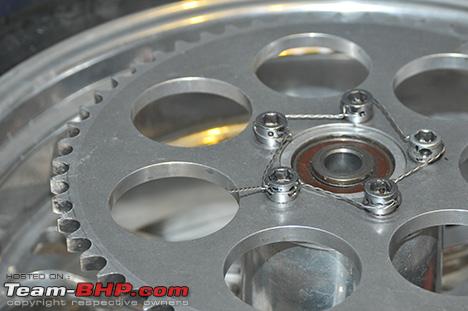
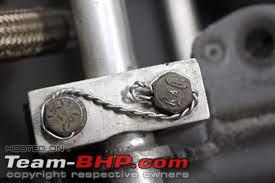

Chamfering/beveled edge: Loads paths in materials tend to accumulate at sharp corners, thus edges are rounded for a larger surface area contact to prevent edge cracks. As shown above notice the edges are now cup shaped thus sharp edges are avoided.
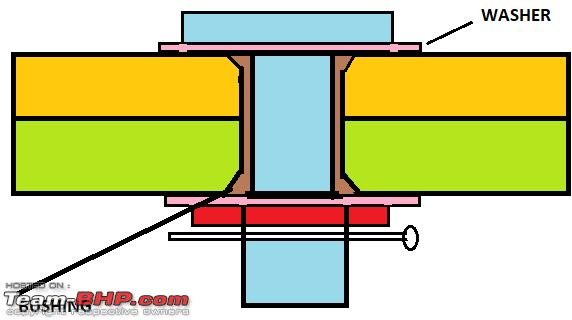
Washers/Bushings: They serve two purposes; Distribute the load on a larger surface thus prevent the damage to sheets and they are made of softer material thus they wear out protecting the main hardware. Washers can also be lock type.
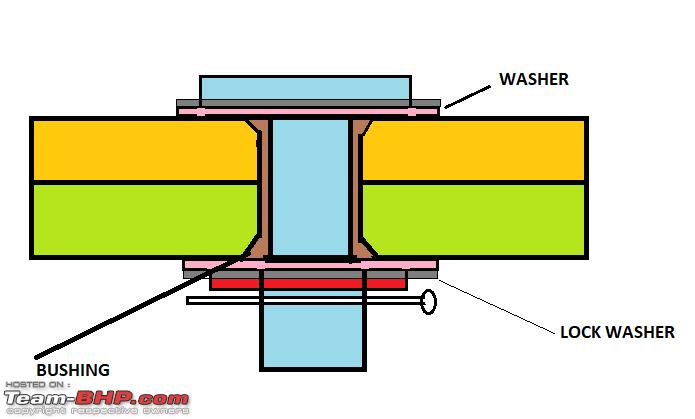
Surface protection: Metal corrodes or oxidizes to slowly weaken and give away, especially in high temp, acidic and abrasive environs . Dissimilar metal corrosion also happens at joints. Thus electroplating, primer, paint , enamel coating is done on the hardware and the sheet to make it long lasting.

Sealing the Joint: to make the joint lifelong Or in places with extreme environs like fuel tank, bridges, under ocean etc . The complete joint is made invisible by completely covering it with sealants like silicon etc.
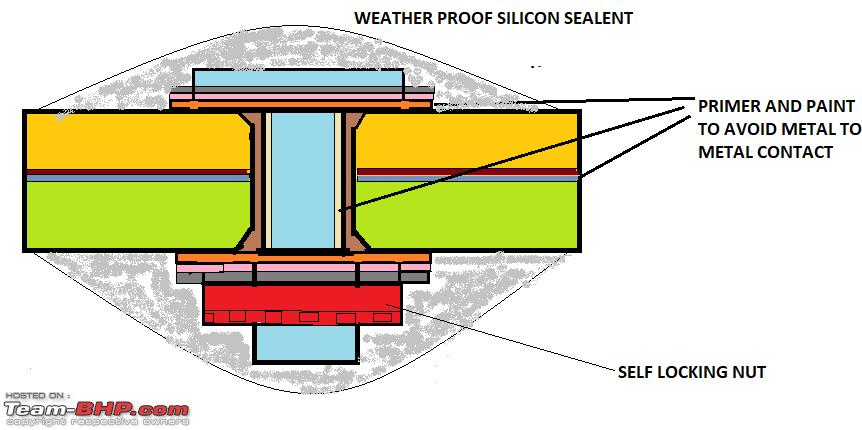
Thus we see the evolution, might not be technically spot on ,but the message is loud and clear: Quality and character of a machine is more built in then visible, what it gives is feel, handling, running dynamics and graceful ageing than the bling bling we experience . High quality products are so because their creators do different things AND things differently. It is the zero-compromise culture with continuous improvement and an eye for detail that these manufacturers strive fo , be it a engine mount or a upholstery clip, they know that it is just not the quality material but also the way it connects to others which effects the final product.
Perfect execution of a sharp turn on a long winding road is motorists heroin. In those moments no one is looking at a 10 inch screen or hearing a BOSE sound , at that time your vehicle is your song and a good engineered machine will give you that pleasure all its life.
Car buying decision has biases, we see the Koreans pulling customers by increasing touch screen size, putting fancy white lights and adding chrome. Very well engineered products like the Compass are not people's favorite, Fiat Palio was a hot hatch still had a early demise. My suggestion to people before buying is to read long term reviews and If Germans ask for a premium price, its not for what you see but what's inside right up to each nut and bolt.
I am an engineer and work on commercial aircraft like the Boeing 737 and Airbus 320. I have visited factories where they are built and assembled. Will post on commercial aviation soon.
Check out BHPian comments for more insights and information.




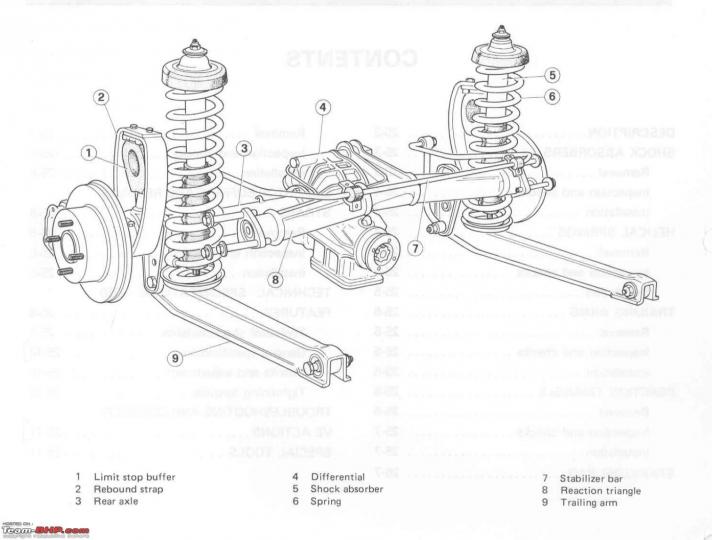
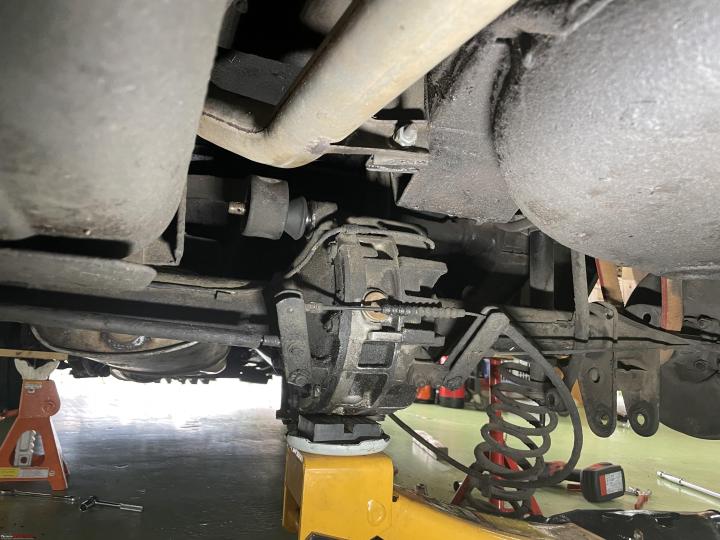





_2.jpg)

